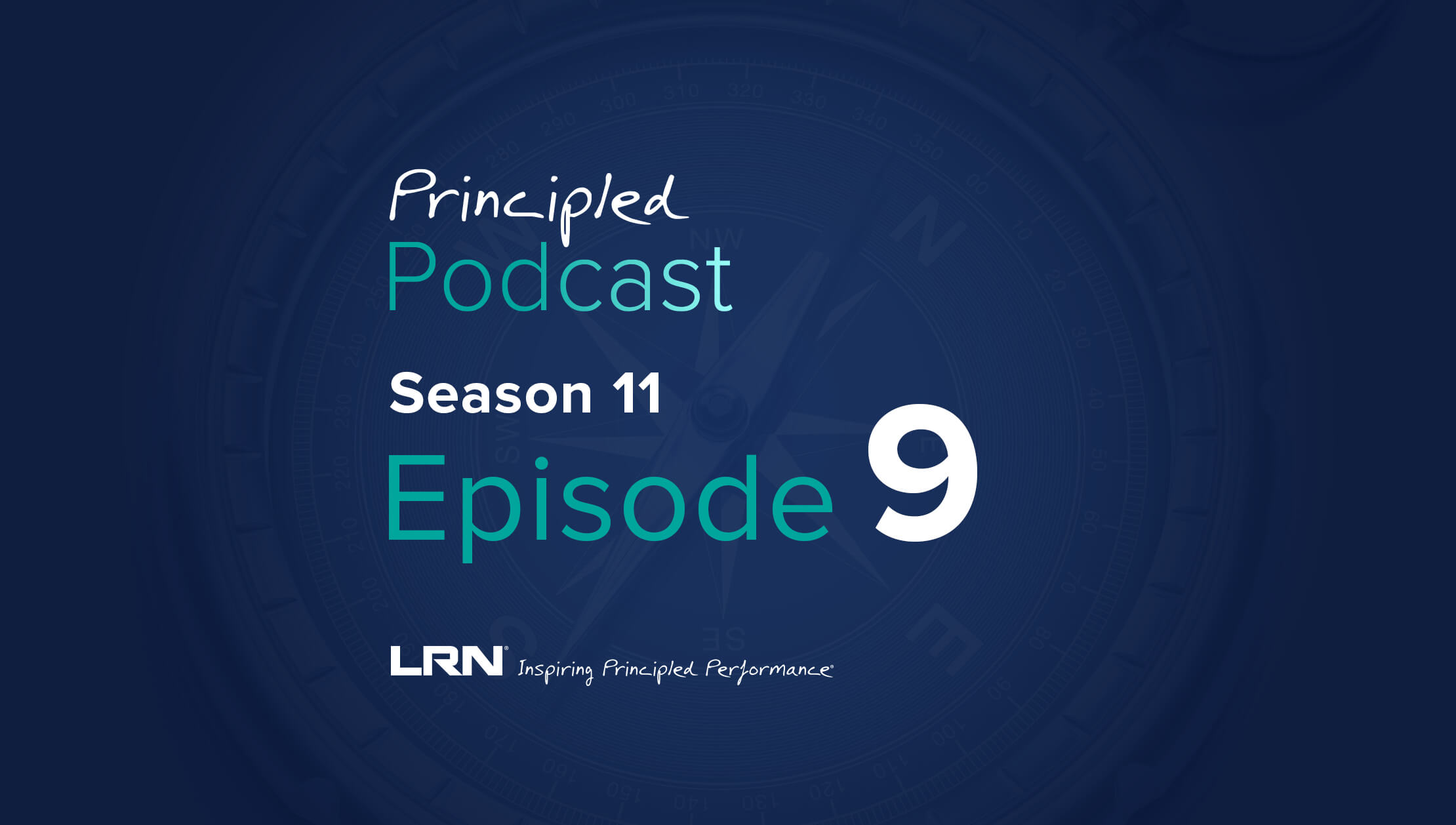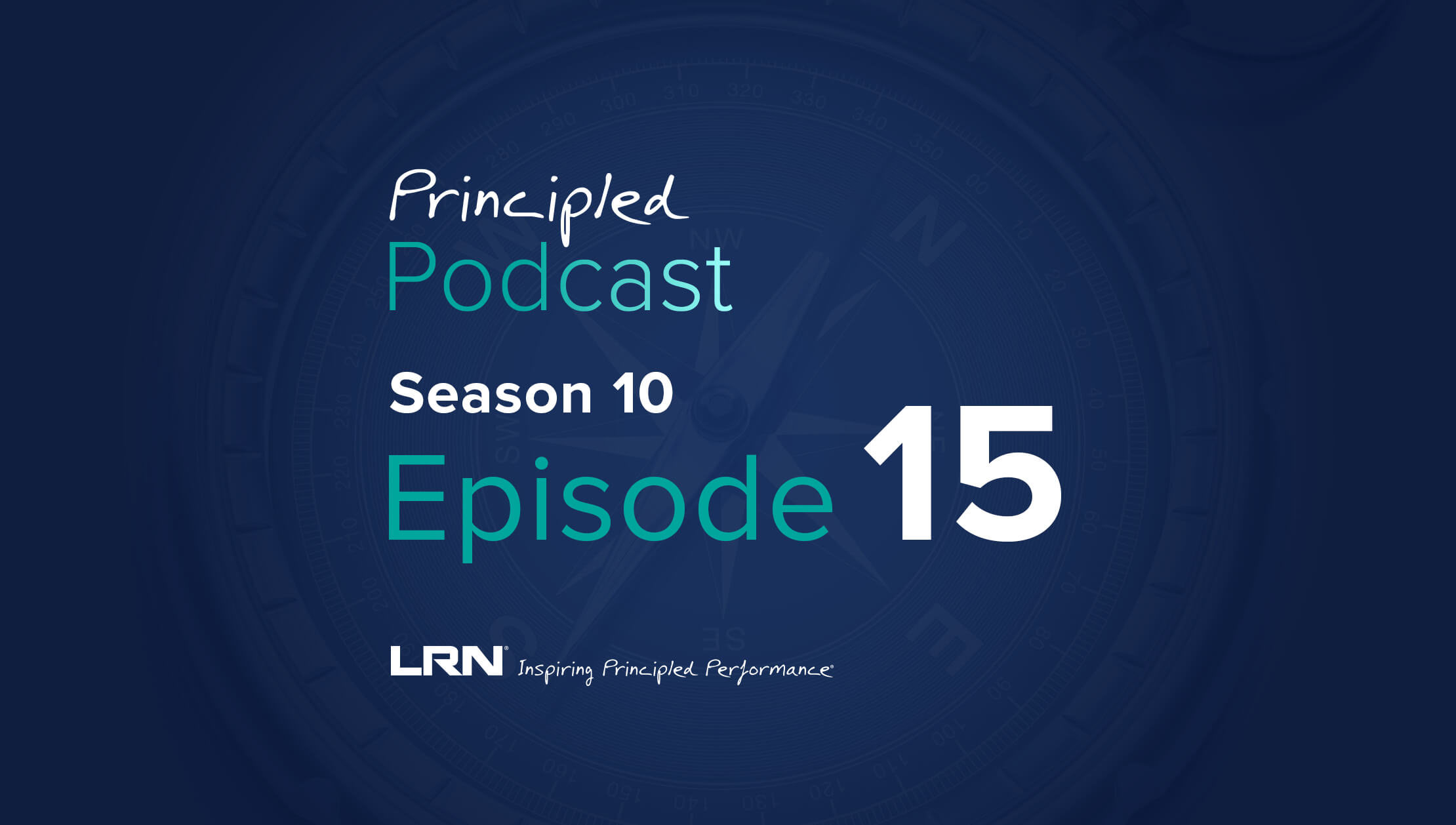Corporate culture has a significant impact on business results, and recent LRN research has the data to prove it. Our Benchmark of Ethical Culture report found that companies with the strongest ethical cultures outperform—by approximately 40%—across all measures of business performance, including levels of customer satisfaction, employee loyalty, innovation, adaptability, and growth. While the data provide a strong and compelling case for businesses to invest in building more rigor in the management of ethical culture, it’s important to acknowledge that culture change isn’t easy. However, there is an established methodology to follow in shaping an ethical corporate culture.
How to ignite ethical culture change in 5 steps
The LRN Benchmark of Ethical Culture is the result of a multi-year, collaborative research effort with data drawn from a cross section of nearly 8,000 employees, representing 17 industries and 14 countries. It builds on three decades of work and supporting research that conclusively proves that ethical cultures don’t just protect corporate reputations, they also propel the bottom line. Through this research, we have identified five key steps that organizations should take to create and sustain ethical culture change.
1) Engage key stakeholders and keep them engaged.
Upholding ethical culture is not a one-person—nor one-department—responsibility. Culture is something akin to a living and breathing entity. We sometimes say that effective oversight looks something like caring for a temperamental indoor houseplant. You understand that to thrive, it must live in the right environment with proper care and oversight. You trust that if the right foundations are there, you can step back and watch it to grow. But you also assume accountability and responsibility to monitor changes in the environment and within the health of the plant itself and make the necessary adjustments to continue its growth and success over the long term. It’s important for companies to have a common articulation of cultural ideals and that everyone understands their responsibility to uphold those standards of workplace conduct - and will be held accountable for doing so.
2) Assess the current state: Survey your people based on your unique cultural dynamics.
There are many ways to collect data on company culture, but the best method is going straight to the source: your employees. Asking how senior leaders, middle management, and individual contributors experience corporate culture can broaden your understanding of how people interpret the culture and values of your organization. And it’s not just a matter of how people feel about culture. It’s how the system of culture impacts actual employee behaviors that matters most. This can also help identify any gaps in experience that need immediate improvement. Access to data and analytics tools to illustrate objective insights is key, along with best practice insight on where and how to intervene.
3) Have the courage to acknowledge current-state realities honestly and transparently.
Surveying your people about company culture might reveal challenges that senior leaders are either unaware or defensive of. In those instances, it is important to maintain an open dialogue that acknowledges the realities presented by other employees and focuses on improving culture for everyone. The “leadership disconnect” is a long-studied corporate dynamic, whereby the further up the corporate hierarchy one is, the rosier one’s glasses tend to be. Data in the Benchmark of Ethical Culture reinforce this concept: on average, senior leaders report scores about 11 percentage points higher than those of individual contributors across all dimensions of culture. In order to effectively bridge the culture gap, leaders need to be able to gain feedback from employees at all levels to truly understand how these dimensions express themselves in the workplace.
4) Intervene by responding to cultural strengths and critical risk areas.
Armed with objective data, leadership awareness, and a commitment to growth, organizations are ready to take action. Companies are recommended to review assessment results and select the top 1 – 3 areas of opportunity to develop strategic action plans around. Too often we see companies effectively assess their culture but fail to implement the change initiatives necessary to improve. Strategic action plans for cultural improvement should contain key objectives, a sequence of action items, realistic timelines, stakeholder accountabilities, budget approvals, and metrics for gauging success. We can say confidently, a strategic investment in culture will be worth it.
That said, don’t forget to communicate your assessment results and action plans: Communicating strengths and challenges with your wider workforce is essential to evolving your corporate culture. It reinforces a culture where it’s safe to speak up and also a culture where leaders are listening in and responding to needs in the workforce. This shouldn’t be a one-way exercise but a dialogue. Including personal stories or concrete examples of the steps you plan to take can further strengthen trust and faith in the systems and leadership to ensure proper oversight.
5) Assess, track, and report on progress.
Culture matters, but you cannot effectively manage culture—let alone ignite culture change—if you don’t measure it. Resources that provide a comprehensive look at the state of ethical culture (like the Benchmark of Ethical Culture) are a good starting point. Included are insights from which companies can compare and become even more rigorous in the management of their cultures. Tracking cultural progress over time is particularly important for those who wish to effectively govern, mitigate risk, ensure compliance, and lead on ESG, DEI, organizational justice, trust, and other metrics.
The key takeaway
Ethical culture is more than just the stated values of an organization; it is the sum of the actual values that guide behaviors—how decisions are really made, emails really composed, promotions really earned, and people really treated every day. Acting on these five steps to engage your people, address your strengths and challenges openly, and regularly measure your progress is crucial to igniting culture change.
To learn more, download a copy of the Benchmark of Ethical Culture and check out these additional resources to help you develop your corporate culture:



